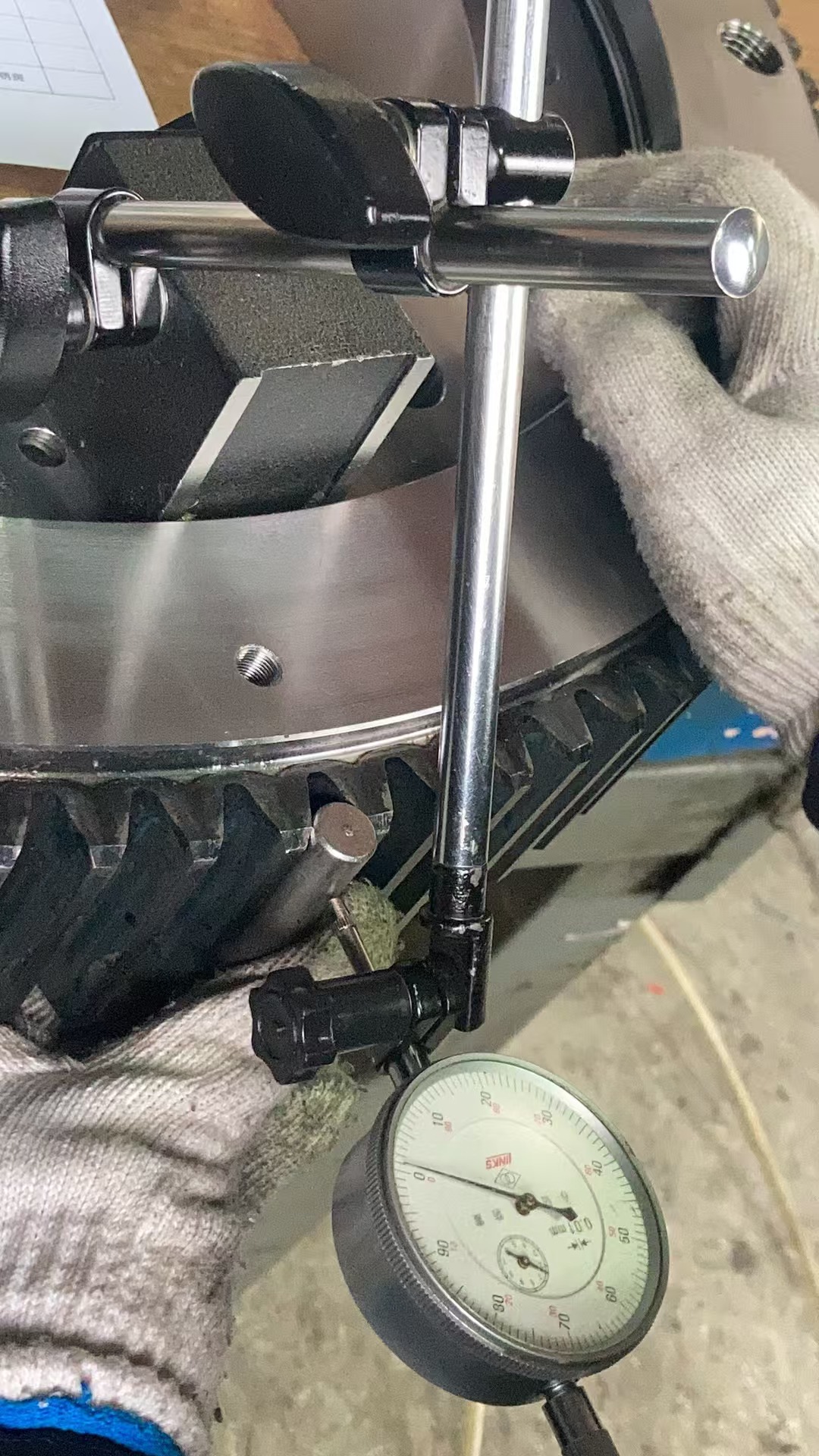Accurately locate the highest runout of tooth to eliminate equipment vibration hazards
Deviations in the highest runout of tooth location of slewing ring bearings are a common cause of equipment failure. When the highest runout of tooth detection is inaccurate, it can lead to:
Abnormal gear meshing—accelerated tooth surface wear or even tooth breakage
Systemic vibration — causing rotational shaking, abnormal noise, and structural component fatigue cracks
Reduced service life — slew bearing failure, resulting in a 30% or more increase in maintenance costs
Three-step precise localization method to completely solve the problem:
1. Initial screening by dividing into six equal areas
Divide the ring bearings ring into six detection areas (each area 60°) and use a dial indicator to quickly lock in the area with the largest jump value
2. Fine re-inspection of highest runout of tooth (critical step)
Select 3–5 suspicious teeth within the problem zone and conduct millimeter-level re-inspection with a 0.5-tooth pitch increment
3. Dynamic verification
After marking the highest point, rotate the slew bearings in both directions for two full revolutions to confirm the stability of the runout value (tolerance ≤ 0.02 mm).
This method has successfully resolved abnormal noise issues in the rotation of a port crane for a new German customer—vibration values decreased by 80% after adjustment. We recommend performing this inspection process every 2,000 operating hours, which can extend slew bearing lifespan by 40%.


